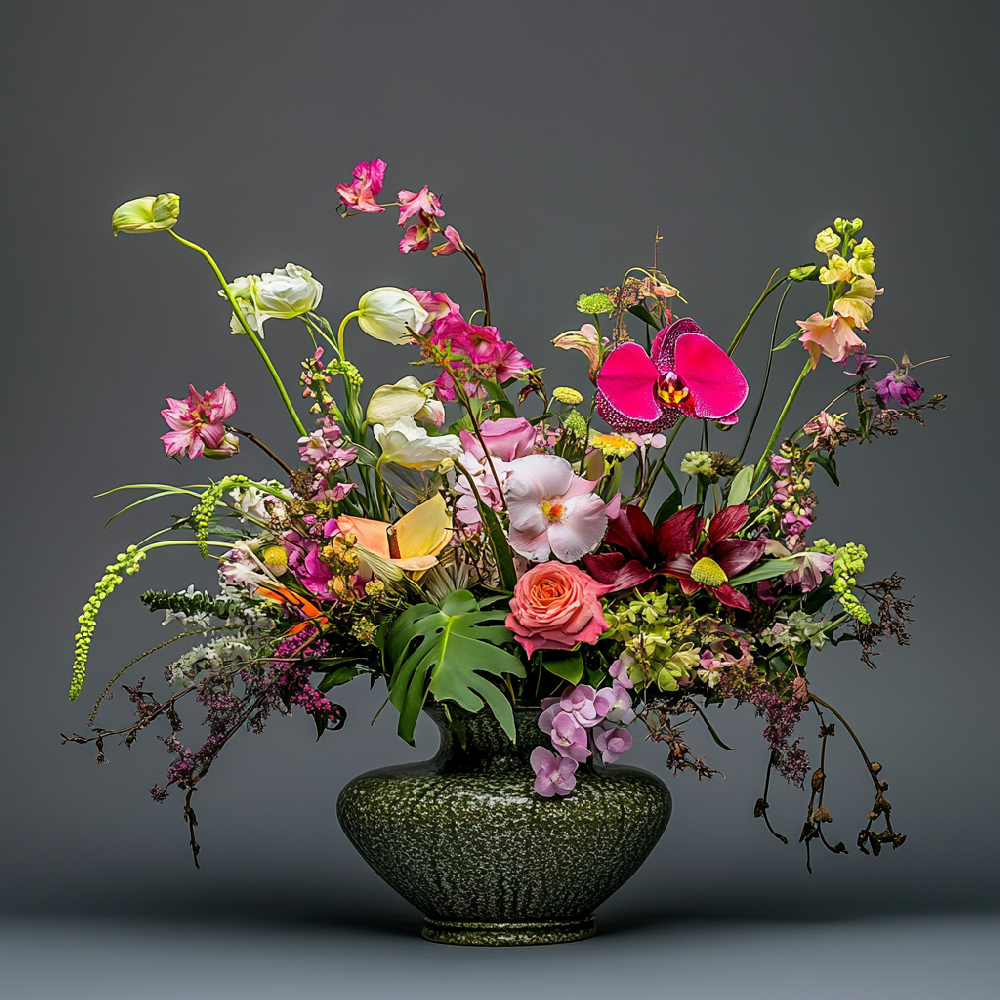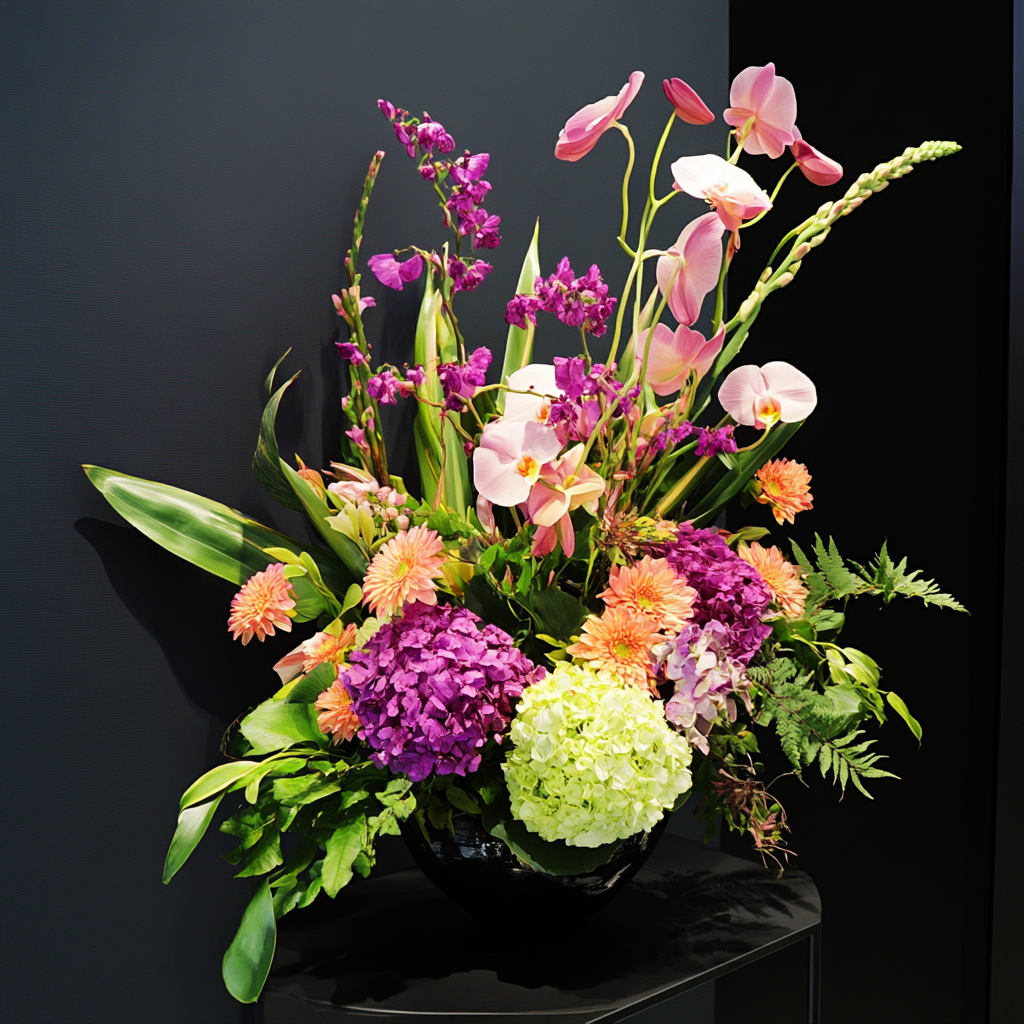Flower Arranging Techniques: Tips for Creating Beautiful Bouquets and Arrangements
Flower arranging is both an art and a skill that can transform a simple bouquet of flowers into a stunning centerpiece or a thoughtful gift. Whether you're a beginner or looking to refine your technique, here are some essential flower arranging tips to help you create beautiful and long-lasting arrangements.

1. Choose the Right Vase or Container
The container you choose sets the foundation for your arrangement. Consider the size, shape, and color of the vase in relation to the flowers and the space where it will be displayed. For example, a tall, slender vase is perfect for showcasing a few elegant stems of lilies, while a wide, shallow bowl can hold a more casual arrangement of wildflowers.
2. Prepare the Flowers
Before you start arranging, it's crucial to prepare the flowers properly. Remove any leaves that will be below the waterline to prevent bacterial growth. Trim the stems at an angle with a sharp knife or scissors. This increases the surface area for water absorption and helps the flowers stay fresh longer. Ideally, trim the stems underwater to prevent air bubbles from entering the stem, which can block water uptake.
3. Start with a Base
When creating your arrangement, start by establishing a base. This can be done using filler flowers or foliage. Filler flowers like baby's breath or statice add texture and fill in gaps, while foliage like eucalyptus or ferns provide a lush backdrop. Arrange these elements in the vase first, ensuring they are evenly distributed and create a balanced foundation.
4. Add Focal Flowers
Next, add your focal flowers. These are the most eye-catching and often the largest flowers in your arrangement, such as roses, lilies, or peonies. Place them in the vase strategically, considering the overall shape and balance you want to achieve. For a symmetrical arrangement, place the focal flowers evenly around the vase. For an asymmetrical look, cluster them on one side or create a diagonal line.
5. Fill in with Secondary Flowers
After your focal flowers are in place, fill in the arrangement with secondary flowers. These can be smaller flowers that complement the focal flowers and add depth and interest. For example, if you have large roses as your focal flowers, you might add smaller carnations or daisies as secondary flowers. Arrange them in between and around the focal flowers, ensuring a natural flow and balance.
6. Pay Attention to Height and Shape
Consider the height and shape of your arrangement. For a traditional, rounded bouquet, keep the flowers at a similar height and arrange them in a circular pattern. For a more modern, linear look, vary the heights of the flowers and create a sense of movement with diagonal lines. You can also create a cascading effect by allowing some flowers to drape over the edge of the vase.
7. Use Odd Numbers
In flower arranging, it's often recommended to use odd numbers of flowers. This creates a more natural and visually appealing look. For example, instead of using four roses, use three or five. This principle applies to both focal and secondary flowers.
8. Add Finishing Touches
Once your main arrangement is complete, add any finishing touches. This could include ribbons, decorative picks, or even small fruits like berries for a seasonal touch. These elements can enhance the overall aesthetic and tie the arrangement together.
9. Care for Your Arrangement
To keep your flower arrangement looking fresh, change the water every few days and re-trim the stems. Remove any wilted flowers or leaves promptly. If you notice the water becoming cloudy, this is a sign that it's time to refresh it. Adding a floral preservative can also help extend the life of your flowers.
10. Practice and Experiment
Finally, remember that flower arranging is a skill that improves with practice. Don't be afraid to experiment with different flowers, containers, and techniques. Each arrangement is a new opportunity to learn and create something beautiful.

By following these tips, you can create stunning flower arrangements that bring joy and beauty to any space. Whether you're arranging flowers for a special occasion or simply to brighten up your home, these techniques will help you achieve professional-looking results. Happy arranging!
